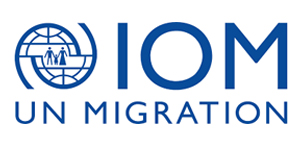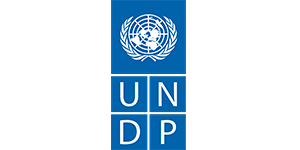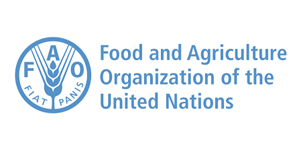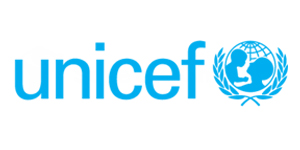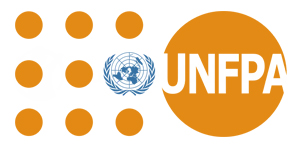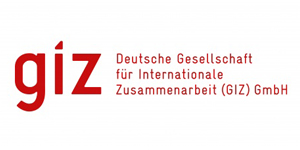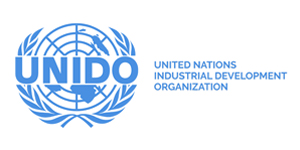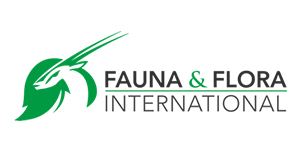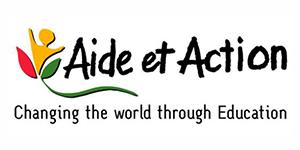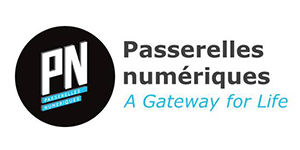REQUEST FOR QUOTES
A CROSS-SECTIONAL STUDY OF TWO VERBAL AUTOPSY
INSTRUMENTS IN VIETNAM
RFQ Release Date: December 16, 2020
Questions Due Date: December 24, 2020. Submission of questions or requests for clarification must be submitted in writing via email to thanhha@fhi360.org and TThang@fhi360.org by 5:00 pm Hanoi. Please note that inquiries and answers to inquiries will be shared with all applicants. Please do not contact any FHI 360 employees regarding this RFQ. Contacting individual employees may be cause for disqualification. No Telephone Inquiries Will Be Answered.
Proposal Due Date: December 24, 2020, 5:00pm Hanoi. Complete proposals must be submitted via email to thanhha@fhi360.org and TThang@fhi360.org no later than 5:00 pm Hanoi.
Anticipated Period of Performance: December 25, 2020– March 20, 2021
I. Background
Cause of death data in the context of well-functioning civil registration and vital statistics system are fundamental from a public health perspective. All countries need to get reliable cause-specific mortality data in real time, at a minimum cost to prioritize resource allocation, planning, develop policy, identify appropriate interventions and evaluate ongoing health programs.
In Vietnam, there are two main systems for collection and compilation of primary mortality data. One is the national Civil Registration and Vital Statistics System (CRVS) by Ministry of Justice (MOJ); and the second, the national routine Health Management Information System (HMIS) by the Ministry of Health (MOH). In addition, the Commune Population and Family Planning Committee (CPFPC) also maintains registers of vital events at the local level for recording demographic data including mortality data in the community. Deaths can be registered at the commune-level people’s committee or a district-level committee, depending on the circumstances. However, detailed information on deaths by age, sex and cause are missing in the monthly statistical summary report.
The Crude Death rate in Vietnam in 2009 was 6.8 deaths per 1000 population (7.4 per 1000 population in rural and 5.5 per 1000 population in urban). Most of the deaths (77.6%) occur in the community for which cause of death is not reliably reported. This is because information on the cause of death depends on whether and how accurately the family report information about the death of their relative to the commune justice officers.
Verbal Autopsy (VA) is the only methodology available to identify the probable cause of death where there is no physician available for medical certification. Verbal autopsy (VA) is a process whereby relatives of the deceased respond to questions about the medical history and terminal illness that led directly to death. The principal purpose of a VA is to estimate the cause-specific mortality fractions in a population. This data collection option in low resource settings is realistic, reliable and routinely applicable to confidently monitor progress with the development strategies.
With approximately 500,000 deaths occurring annually in the community, the most cost-effective and sustainable method to collect reliable cause of death data is through the implementation of an automated verbal autopsy method, such as Tariff, using the SmartVA package, which has been shown to work well in Vietnam. However, this needs to be tested in a carefully designed study with adequate cases to assess the performance characteristics of SmartVA more rigorously
II. Scope of Work
The purpose of this study is to provide evidence to enable the Ministry of Health (MOH) to identify a suitable VA instrument for ascertaining the underlying cause in deaths occurring outside health facilities. Studies have revealed the length and structure of the verbal autopsy questionnaire is an important consideration in scaling up verbal autopsy in national vital registration systems. Respondents will be distracted or lose interest in sharing their stories if the interview is too long. Also, staff and data processing costs will be less if the information collected is the minimum essential for a reliable diagnosis.
The objective of study:
- To describe probable cause-specific mortality fractions at the population level and to compare the cause of death distribution using three automated algorithms i.e. InterVA, InSilicoVA and Tariff 2.0 for WHO 2016 VA instrument and Tariff 2.0 in SmartVA.
- To compare the feasibility and acceptability of two VA instruments for routine application
Study questions
- What is the plausibility of cause-specific mortality fractions using 3 automated algorithms (InterVA, InSilicoVA & Tariff 2.0)?
- Which VA instrument was more acceptable and feasible for routine application?
To ensure the quality of the above-mentioned product, the selected consultant(s) must work closely with the BHP Vietnam, University of Melborne and the Department of Finance and Planing- Ministry of Health. The work covers the following services for the study:
- Developing detail study protocol
- Developing study tools
- Translating WHO 2016 VA instrument and SmartVA instrument.
- Instrument for collecting data for comparing the feasibility and acceptability of two VA instruments for routine application
- Developing workplan with local stakeholders
- Collecting data for the study
A total of 960 deceased (480 for each instrument) will be selected randomly with stratification based on the age and sex distribution of the deceased. The age groups will be divided into neonate (under four weeks), children (four weeks to 11 years) and adult (12 years and above) in both sites. The sample will be drawn so that the distribution of age groups will be similar in all sites. To allow for non-response, such as if the respondent is unavailable for 3 consecutive visits or refusals, some additional cases (20% of total sample size) have been reserved within this calculated sample size.
This activity might include:
- Sampling from the list of community deaths
- Recruiting VA interviewers
- Training VA interviewers: The University of Melbourne Technical Team will provide VA training to VA supervisors in a training of trainer model using standardized materials and an interviewer manual
- Conducting the VA interview: The interviewer will collect data using ODK collect on the Tablet, including timing of each question and the total interview, and the data will be sent to the server at the end of the interview.
- Conducting a brief survey or a qualitative study with focus group discussions (FGD) to compare the feasibility and acceptability of two VA instruments for routine application
- Analysis of data
- Report writing and presenting
III. Duty station and travel
Data will be collected in Bac Giang.
IV. Application package
FHI 360 is requesting quotations from qualified vendors that are legally registered to operate in Vietnam.
Vendors must submit to FHI 360 the following:
1. A brief outline of the study proposal
2. A brief profile of the organization and description of qualifications
3. Three sample similar products
4. Quote/budget* for services.
- Quotes should be submitted in VND
- Clearly list any taxes or other indirect costs as separate line items in the quote.
Submitted quotes should be valid for 30 days from the date of submission to allow adequate time for organizational approval.
* Quotes should include payment terms. Indicate bank charges/fees, if applicable, for receiving an electronic bank transfer.
Responses to this RFQ should be submitted by email to thanhha@fhi360.org with a copy to TThang@fhi360.org no later than December 24, 2020 5:00 pm Hanoi. with subject line “A CROSS-SECTIONAL STUDY OF TWO VERBAL AUTOPSY INSTRUMENTS IN VIETNAM”.
Any quotations received after this date and time may not be accepted and shall be considered non-responsive. FHI 360 will acknowledge receipt of the quotation by return email within 24 hours.
Any questions or requests for clarification can be submitted in writing to the same email address above by December 24, 2020 at 5:00 P.M. Hanoi. No telephone inquiries will be answered.
V. Criteria for Evaluation
Selection will be based on best value, weighing price against technical factors as outlined below:
- Brief Outline of proposal (20 points)
- Organizational Capability and Samples (50 points)
- Budget (30 points)
VI. Contracting Mechanism
A fixed-price purchase order may be awarded in VND to the responsive vendor whose quote will be evaluated as most advantageous to FHI 360 (lowest price, technically acceptable offer). In the event that service/deliverable requirements need to be shifted during the time period between the signature of a purchase order with the selected vendor and the actual event, FHI 360 will modify the purchase order.
VII. Terms and conditions
1. FHI 360 may cancel an RFQ and/or not make awards.
2. FHI 360 may reject any or all of the responses to its RFQ.
3. Issuance of an RFQ does not constitute award commitment by FHI 360.
4. FHI 360 reserves the right to disqualify any application based on offeror failure to follow RFQ instructions.
5. FHI 360 will not reimburse applicants for the cost of preparing and submitting an application to an RFQ.
6. FHI 360 reserves the right to issue an award on the basis of an initial evaluation of offers without further discussion.
7. FHI 360 may award grants for only part of the activities listed in an RFQ.
8. FHI 360 reserves the right to check an applicant’s donor references.
9. FHI 360 also reserves the right to reject any or all applications received without explanation.
10. FHI 360 has the right to issue amendments to the RFQ at any time.
Request for Quotation Firm Guarantee:
All information submitted in connection with this RFQ will be valid for thirty (30) days from the RFQ due date. This includes, but is not limited to, cost, pricing, terms and conditions, service levels, and all other information. If your firm is awarded the contract, all information in the RFQ and negotiation process is contractually binding.
Offer Verification:
FHI 360 may contact offerors to confirm validity of the offer, contact person, address, and bid amount.
False Statements in Offer:
Offerors must provide full, accurate, and complete information as required by this solicitation and its attachments.
-
Việc làm tại các tổ chức phi chính phủ - NGO Recruitment
- Website: https://ngorecruitment.org/
- Instagram: https://www.instagram.com/ngorecruitment_vn
- LinkedIn: https://www.linkedin.com/in/ngorecruitment
- Group: https://www.facebook.com/groups/VieclamPhichinhphu
- Youtube: http://bit.ly/Youtube_NGORecruitment

